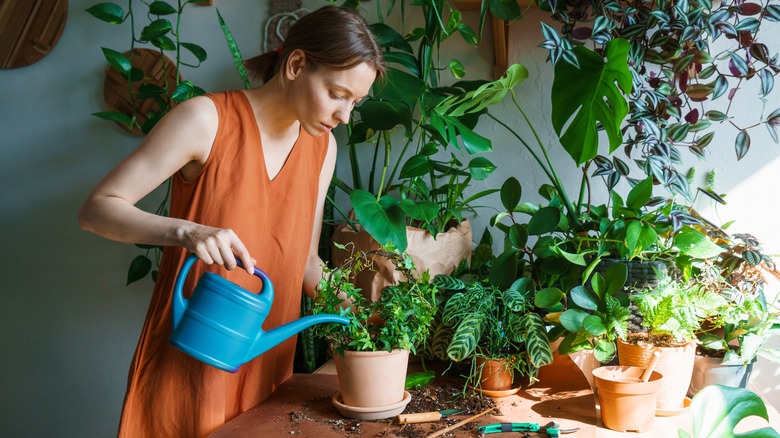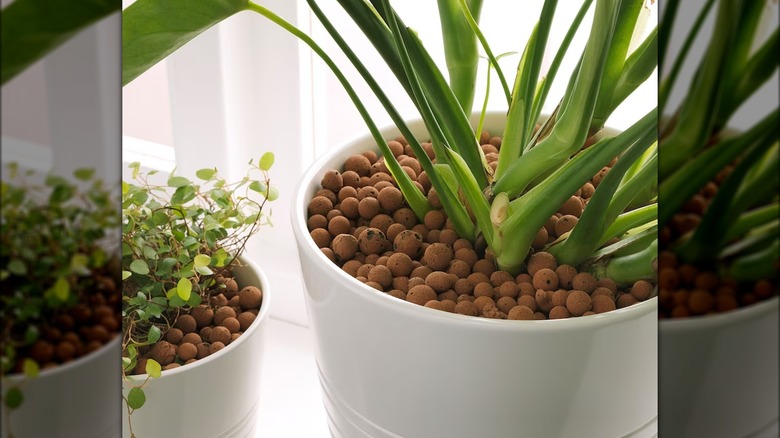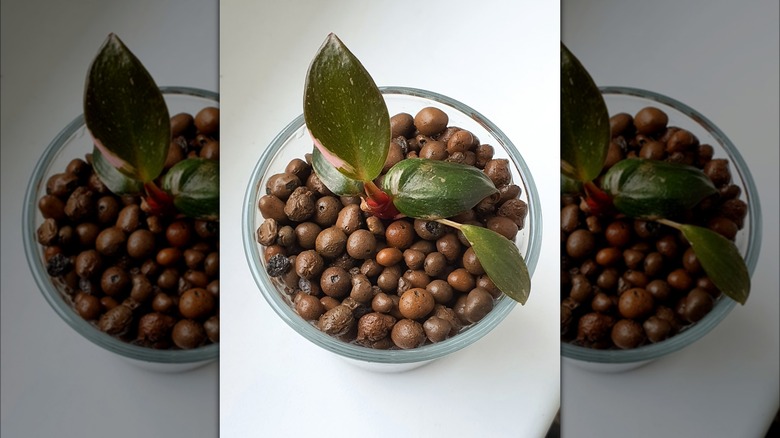Indoor Plant Lovers Are Rushing To IKEA For This Game-Changing Product
Houseplants can liven up your space by adding an accent of color and texture. Buying and styling them in your home is the easy part — it's keeping them alive that's the challenge. Having the right tools can set your greenery up to thrive. LECA is a favorite for houseplant enthusiasts because it can aid in creating an environment that helps plants grow. LECA stands for lightweight expanded clay aggregate and is a medium that expands by soaking up and releasing water into the soil to help keep it moist. This material can help reduce the risks of root rot and soil pests like fungus gnats.
However, many plant lovers stick with regular potting soil over LECA because of the price, as it's much more expensive than soil. Further, it often has to be purchased in bulk, which also increases the price. For many beginners and people who grow plants as a casual hobby, the cost can make this medium impossible to use. However, IKEA's ODLA clay pellets have changed the game. This growing medium is about $10 for almost 5.3 quarts, which is significantly less than at various other retailers. Plant enthusiasts are raving about this product because of the inexpensive cost and the way this helps greenery thrive.
Why plant parents love LECA
So, what's the hype around LECA, and why are plant parents so excited about it? Many people prefer using this medium over potting soil because it takes a lot of the stress out of plant maintenance. The clay balls retain moisture and consistently release it to the roots, ensuring your greenery is always getting the right amount of water. When soil has too much water, it can lack oxygen which can lead to root rot and yellowing leaves. LECA helps regulate the amount of moisture to prevent these negative side effects.
The moisture properties of LECA also lower the maintenance associated with plants. You'll only have to water your plant when the clay balls need to reabsorb more water. This material is also reusable, so you can use the same clay balls multiple times, only having to buy more if you decide to add more houseplants to your collection.
However, one of the biggest downsides to LECA is the initial cost of using this potting material, as it's going to be more expensive than soil. Another disadvantage is that it requires more work to get started than potting soil. LECA has to be thoroughly rinsed and soaked overnight before using, unlike potting soil that can be used right out of the bag.
Using LECA for your plants
Another reason people are raving about IKEA's ODLA clay pellets is because they are incredibly versatile as a growing medium. You can use them on their own or in combination with potting soil, which will help increase drainage and aerate the soil so oxygen can reach the roots. This allows you to use LECA with many different types of plants, particularly the ones that will thrive better in soil than they will in water or LECA-only growing mediums. Use a planter without drainage holes so that the clay balls can absorb the water.
If you're using LECA on its own, make sure you choose the right plants. Avoid types that have thin root systems, ones that need a lot of nutrients, and types that require consistently-moist soil. Monstera, begonia, alocasia, and sansevieria varieties all do well when placed in this medium. When it comes to fertilizing these plants, you'll want to select a hydroponic fertilizer over a soil-based one.
You could also create a semi-hydroponic system by placing this product in a net pot inside a larger catch pot. Similar plants will thrive in a semi-hydroponic system as in an all-LECA system. With an all-LECA system, you'd water the plant, allow the clay to soak up the water, and add more water when the clay balls are dry. With a semi-hydroponic system, you'd just need to change the water every two to three weeks.


